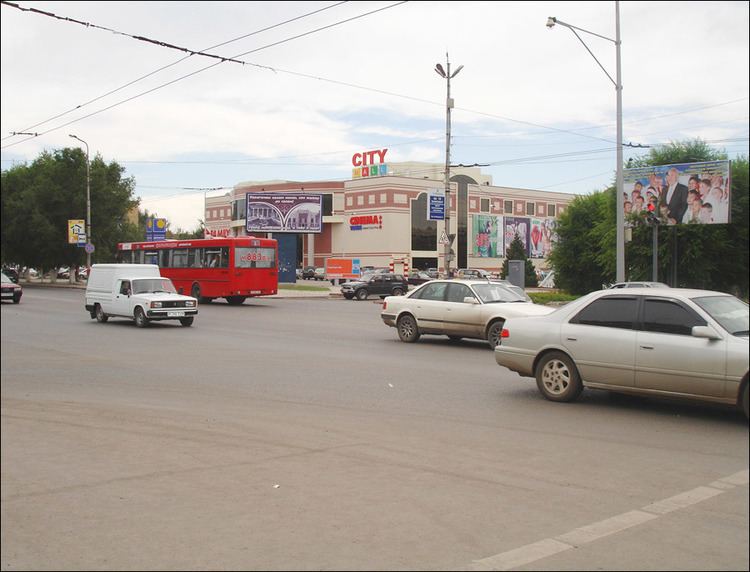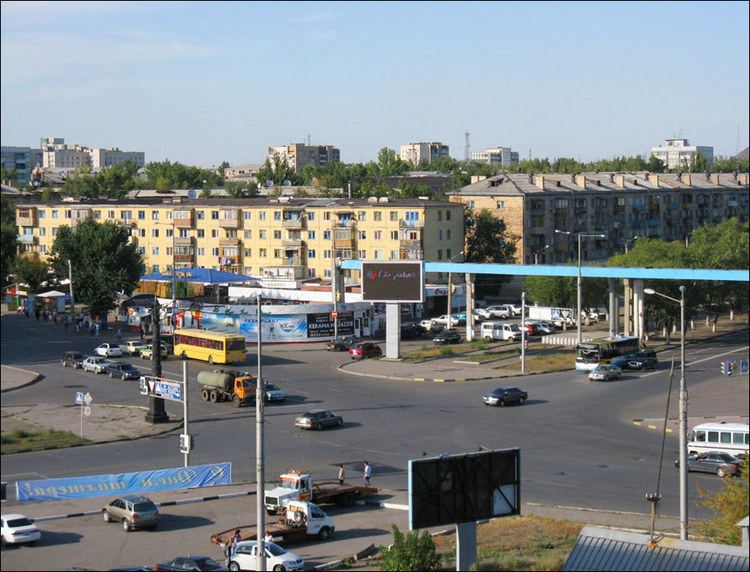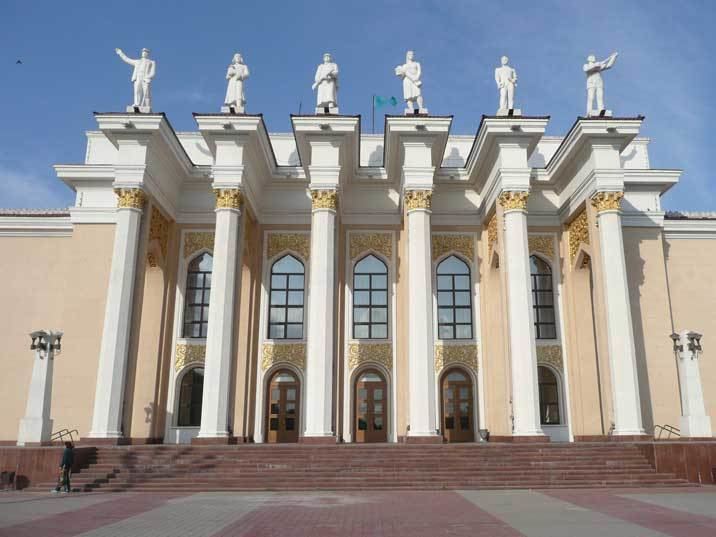Country Area 497.8 km2 Founded 1931 | ||
 | ||
Colleges and Universities Karagandy State University | ||
Map of Karaganda
Karaganda or Qaraghandy (Kazakh: Қарағанды/Qaraghandy [qɑɾɑˈʁɑndə]) is the capital of Karaganda Region in Kazakhstan. It is the fourth most populous city in Kazakhstan, behind Almaty (Alma-Ata), Astana and Shymkent. Population: 459,778 (2009 Census results); 436,864 (1999 Census results).
Contents
- Map of Karaganda
- Karagandaastana nz2uks photos around astana kazakhstan
- Karaganda city
- History
- EMP
- Climate
- Industry
- Theater
- Sports
- Other
- Education
- Religion
- Transport
- Notable residents
- Sister cities
- References

In 1940, up to 70% of the city's inhabitants were ethnic Germans. Most of the ethnic Germans were Soviet Volga Germans who were collectively deported to Siberia and Kazakhstan on Stalin's order when Hitler invaded Soviet-annexed eastern Poland and the Soviet Union proper in 1941. Until the 1950s, many of these deportees were interned in labor camps, often simply because they were of German descent.

The population of Karaganda fell by 14% from 1989-1999 following the dissolution of the Soviet Union; it was once Kazakhstan's second-largest city after Almaty. One hundred thousand people have since emigrated to Germany. There is also a concentration of ethnic Poles in the city.
This is the home city of Kazakh World War II hero Nurken Abdirov. A statue in Abdirov's honor is located in the center of the city.
Karaganda is located 200 km South-East from Kazakhstan's capital Astana.
Karagandaastana nz2uks photos around astana kazakhstan
Karaganda city
History
The name "Karaganda" is derived from "caragana" bushes (Caragana arborescens, Caragana frutex), which are abundant in the area.
The original site of Karaganda is now labeled on city maps as the "Old Town", but almost nothing remains on that site. In exploiting the rich coal deposits of the area, the Soviets undermined the entire city.
This area was abandoned. The city was relocated to the south, where it was rebuilt.
In the early 1990s, Karaganda was briefly considered as a candidate for the capital of the (then) newly independent Republic of Kazakhstan, but its bid was turned down in favour of Astana.
EMP
Karagandy suffered the most severe electromagnetic pulse effects ever observed when its electrical power plant was set on fire by currents induced in a 1,000 km (620 mi) long shallow buried power cable by Soviet Test ‘184’ on 22 October 1962. The test was part of the Soviet Project K nuclear tests (ABM System A proof tests), and consisted of a 300-kiloton high-altitude nuclear explosion at an altitude of 290 km (180 mi) over Zhezkazgan.
Prompt gamma ray-produced EMP induced a current of 2,500 amps measured by spark gaps in a 570 km (350 mi) stretch of overhead telephone line to Zharyq, blowing all the protective fuses. The late-time MHD-EMP was of low enough frequency to enable it to penetrate 90 cm (35 in) into the ground, overloading a shallow buried lead and steel tape-protected 1,000 km (620 mi) long power cable between Aqmola (now called Astana) and Almaty. It fired circuit breakers and set the Karaganda power plant on fire.
Climate
Karaganda has a humid continental climate (Köppen climate classification Dfb) with warm summers and very cold winters. Precipitation is moderately low throughout the year, although slightly heavier from May to July. Snow is frequent, though light, in winter. The lowest temperature on record is −42.9 °C (−45.2 °F), recorded in 1938, and the highest temperature is 40.2 °C (104.4 °F), recorded in 2002.
Industry
Karaganda is an industrial city, built to exploit nearby coal mines using the slave work of prisoners of labour camps. Flora Leipman, a British citizen, spent several years unlawfully detained in a number of other nearby camps, and described her experiences in the book "The Long Journey Home" (published 1987). Commercial extraction of coal continues to be an important activity in the region even today.
Since local water resources are not sufficient for the needs of a major industrial city, the Irtysh–Karaganda Canal was constructed in the 1960s, to supply the Karaganda metropolitan area with water from the Irtysh River more than 400 km away.
Theater
The Miners Palace of Culture is a major landmark in Karagandy.
Sports
FC Shakhter Karagandy is a football club based in Shakhtyor Stadium. They are the current champions of the Kazakhstan Premier League. The local football club has its own heroes and big accomplishments. The most popular player in the team is Andrey Finonchenko. The biggest accomplishment is a victory against Celtic from Scotland. The score was 2-0. The city participated in the open Kazakh Cup in bandy 2009. Saryarka Karagandy is an ice hockey team that plays in the Russian-based Supreme Hockey League (VHL) The popularity of winter sports is growing each year and multi-sports winter games are organised for the Karaganda Region.
Other
Education
Religion
The city is the seat of the Roman Catholic Diocese of Karaganda.
Other
Karagandy was often used as the punchline in a popular joke in the former Soviet Union. Karagandy is fairly isolated in a vast area of uninhabited steppe, and is thought by many to be "the middle of nowhere". When used in the locative case (Караганде), the final syllable rhymes with the Russian word for "where" (где), as well as with a Russian obscenity used to answer to an unwanted question "Where?". Thus the exchange: "Где?" — "В Караганде!" ("Where is it?" — "In Karagandy!")
Transport
Sary-Arka Airport is located 20 kilometers south-east of the city.
